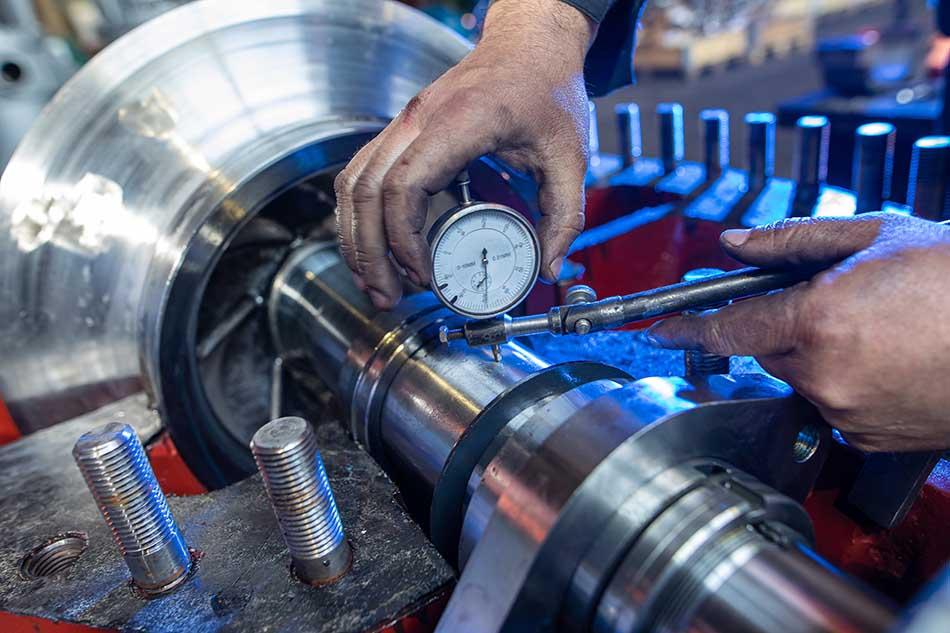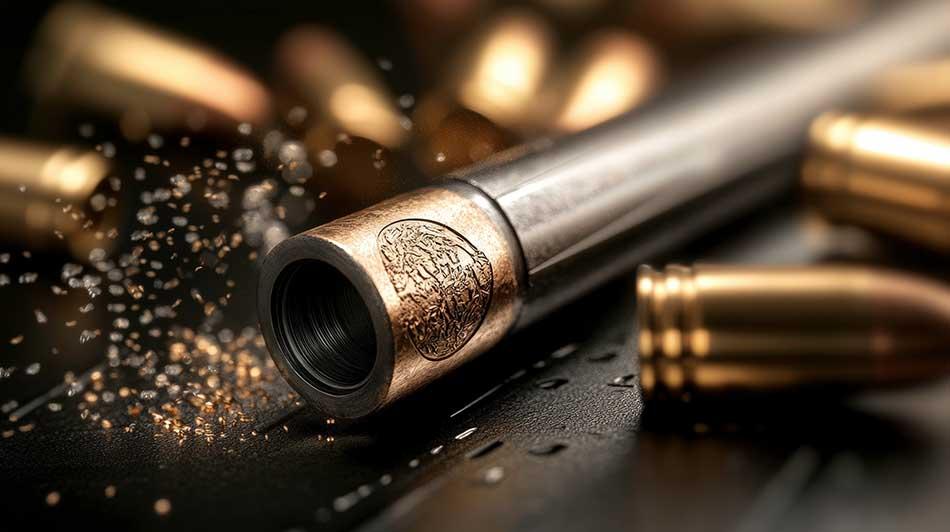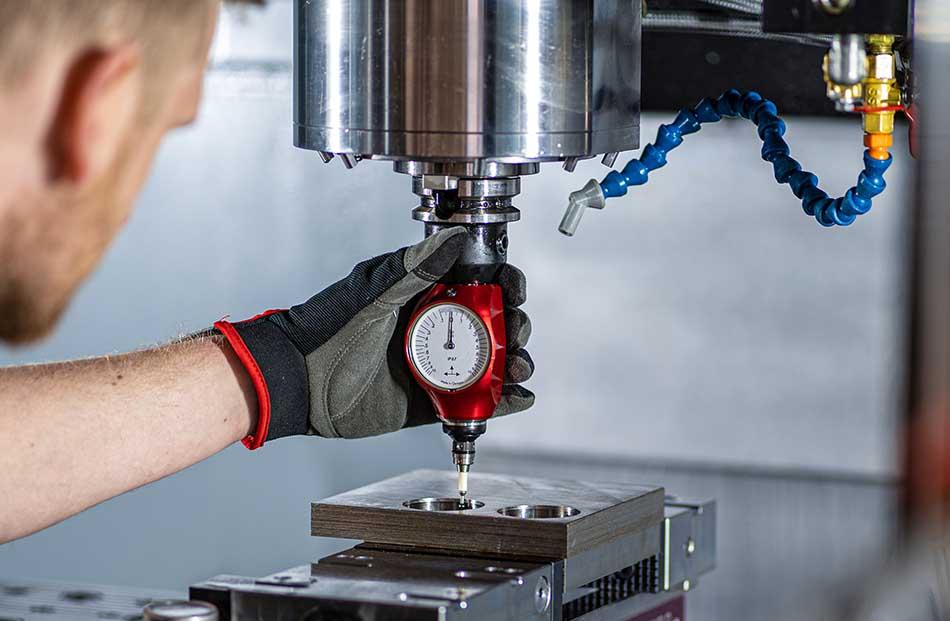Common Engine Lathe Issues & How to Fix Them
An engine lathe is one of the most essential tools in metalworking and machining. It is designed to rotate a workpiece while a cutting tool removes material to shape it into a precise form.
Lathes are widely used in industries ranging from automotive manufacturing to aerospace engineering, thanks to their ability to produce cylindrical parts, threads, and complex components with high precision. However, like all machines, engine lathes are subject to wear and tear over time.
Understanding Engine Lathe Functionality
Even the most well-maintained lathe can develop performance issues that affect accuracy, efficiency, and safety. Recognizing early warning signs and understanding common problems can help operators address minor issues before they escalate into costly breakdowns.
In this section, we will explore the most frequent engine lathe issues, their causes, and the symptoms that indicate when a machine requires maintenance.
Why Maintenance is Crucial for Engine Lathes
Every engine lathe is a precision machine, meaning even small deviations in alignment or component wear can impact performance. Regular maintenance is key to ensuring:
- Accurate machining results – A well-maintained lathe produces parts within precise tolerances.
- Longer machine lifespan – Preventing excessive wear on key components extends the machine’s operational life.
- Fewer unexpected breakdowns – Identifying and addressing problems early reduces downtime and costly emergency repairs.
- Safer operation – A properly maintained lathe prevents workplace accidents caused by equipment failure.
Being aware of potential problems before they arise can save time, money, and resources in any machine shop or production facility.
Key Warning Signs of Engine Lathe Problems
Before discussing specific lathe issues, it’s essential to recognize the most common warning signs that indicate a problem:
- Inaccurate or inconsistent cuts – If workpieces come out with incorrect dimensions, there may be misalignment or tool wear issues.
- Excessive vibration – A lathe should operate smoothly. If there is noticeable vibration, there may be spindle, bearing, or balance issues.
- Unusual noises – Sounds such as grinding, rattling, or knocking could indicate internal wear or misalignment.
- Overheating – The lathe should not become excessively hot during operation. If it does, lubrication or coolant issues may be present.
- Chatter marks on the workpiece – If a workpiece has visible tool chatter, the tool may be loose, or feed rates may need adjustment.
When any of these symptoms occur, operators should take immediate steps to diagnose and address the issue before it worsens.
1. Inaccurate Cuts & Tolerance Issues
One of the most frustrating issues lathe operators face is when parts do not meet required specifications. A lathe that consistently produces inaccurate cuts may have one or more underlying problems, including:
- Misalignment in machine components – If the headstock, tailstock, or tool post is not properly aligned, the cutting tool will not follow the correct path.
- Tool wear or incorrect tooling – A dull or improperly selected cutting tool can reduce accuracy and lead to poor surface finishes.
Loose or unstable components – If the chuck, tool post, or carriage is loose, even small shifts can result in cutting errors.
How to Identify This Issue:
- Measure the finished workpiece using precision tools such as calipers or micrometers to detect inconsistencies.
- Inspect the cutting tools for excessive wear or improper mounting.
- Check alignment using dial indicators to verify proper positioning of key components.
2. Excessive Vibration & Noise
A lathe should run quietly and smoothly. If excessive vibration or noise occurs, it is often due to:
- Spindle misalignment – An improperly aligned spindle can cause instability and inaccurate cutting.
- Worn-out bearings – Bearings that are worn or damaged no longer support the spindle properly, leading to vibration.
Unbalanced workpiece or tooling – If a workpiece is mounted off-center, it can create an imbalance during rotation.
How to Identify This Issue:
- Listen for grinding or knocking sounds from the spindle or motor.
- Observe the machine for visible shaking or instability.
- Check spindle bearings for excessive play or looseness.
If these symptoms persist, failing to address them could lead to further damage, reducing the lathe’s lifespan.
3. Overheating & Lubrication Problems
Lathes naturally generate heat during operation, but excessive overheating signals a problem. This issue is often caused by:
- Insufficient lubrication – If lubrication levels are too low or distribution is uneven, friction increases.
- Excessive friction in moving parts – Worn-out gears, ball screws, or slideways may be rubbing against each other.
Coolant failure – If the coolant system is clogged or malfunctioning, heat will not dissipate properly.
How to Identify This Issue:
- The lathe feels excessively hot to the touch.
- Metal chips appear burned or discolored due to overheating.
- Lubrication levels seem low or unevenly distributed.
Operators should check lubrication lines, ensure coolant is circulating properly, and clean out any blockages in the system.
Recognizing Issues Before They Escalate
Engine lathes are high-precision machines that require careful attention to maintain their performance. Recognizing early warning signs of problems—such as inaccurate cuts, excessive vibration, and overheating—can help prevent major failures and expensive repairs.
By understanding these common issues and their root causes, operators can take preventative action before minor problems turn into major machine breakdowns.
Troubleshooting & Fixing Engine Lathe Issues
Engine lathes are powerful machines, but like any piece of equipment, they develop issues over time. While recognizing problems early is crucial, understanding how to diagnose and fix them is just as important. This section covers step-by-step troubleshooting methods for common engine lathe problems, helping operators restore their machines to peak performance.
Step 1: Diagnosing Lathe Issues
Before attempting repairs, it’s important to diagnose the root cause of a problem. A systematic approach ensures that fixes are effective and don’t lead to further complications.
How to Diagnose Lathe Problems:
- Observe the Lathe in Operation – Pay attention to any unusual sounds, vibrations, or performance issues while the lathe is running.
- Inspect Workpiece Accuracy – If parts are out of tolerance, measure inconsistencies and check for tool chatter, rough surfaces, or misalignment.
- Check for Loose or Worn Components – Examine the headstock, tailstock, tool post, and spindle for excessive play or wear.
- Review Maintenance Logs – If available, check past maintenance records for recurring issues that might indicate a deeper problem.
- Run Basic Machine Tests – Conduct spindle alignment tests, check lubrication systems, and test feed rates to identify potential trouble areas.
By following these steps, operators can pinpoint the cause of an issue before attempting a fix.
Step 2: Fixing Common Lathe Problems
Once the source of a problem is identified, repairs can begin. Below are step-by-step solutions to some of the most common engine lathe issues.
2.1 Fixing Inaccurate Cuts & Tolerance Issues
If a lathe is producing parts that don’t meet required specifications, the following solutions can help restore accuracy:
- Realign the Headstock and Tailstock – Use a dial indicator to check alignment. If misalignment is detected, adjust the tailstock using fine-tuning knobs.
- Check and Replace Worn Tools – Dull or damaged tools should be replaced with sharp, high-quality cutting tools to ensure precision.
- Tighten Loose Workholding Components – Inspect the tool post, carriage, and chuck for any looseness. Tightening these components improves stability during machining.
Adjust Feed Rates and Speed – Excessive feed rates or spindle speeds can cause deflection, resulting in inaccurate cuts. Reducing speed and optimizing feed settings can enhance precision.
2.2 Reducing Excessive Vibration & Noise
If a lathe is shaking or producing unusual noise during operation, the following steps can help:
- Inspect the Spindle Bearings – Worn bearings can cause excessive vibration. If bearings feel rough or make grinding noises when rotated, they should be replaced.
- Check for Unbalanced Tooling or Workpieces – Make sure that workpieces are centered in the chuck and that tooling is evenly positioned.
- Secure Loose Components – Bolts, screws, and fasteners can become loose over time. Tightening these elements can reduce unnecessary movement.
Test Spindle Alignment – If the spindle is out of alignment, realigning it according to manufacturer specifications will restore balance.
2.3 Preventing Overheating & Lubrication Problems
Heat buildup and lubrication failures can lead to severe machine damage. Here’s how to prevent these issues:
- Flush and Clean Lubrication Lines – If oil flow is restricted, flushing out lubrication lines will prevent friction-related overheating.
- Check Coolant Flow and Replace Contaminated Coolant – If the coolant appears cloudy or thick, it should be replaced. Inspecting coolant lines for blockages ensures proper heat dissipation.
- Reduce Spindle Speeds for Heavy Cuts – Excessive speeds generate more heat. Lowering RPMs for deep cuts reduces temperature buildup.
Inspect and Replace Worn Gears or Slideways – Friction can increase if moving parts are worn. Replacing these components helps restore smooth operation.
Step 3: Preventing Recurring Lathe Problems
Once an issue is resolved, taking preventative steps can stop it from happening again. Here are a few strategies to ensure long-term lathe performance:
- Regular Alignment Checks – Using a dial indicator to check machine alignment prevents gradual misalignment issues.
- Lubrication System Maintenance – Checking oil levels daily and cleaning filters ensures consistent lubrication.
- Routine Vibration Testing – Detecting abnormal vibration early can prevent bearing and spindle damage.
- Proper Workholding Techniques – Ensuring workpieces are securely held in place reduces inaccuracies and tool chatter.
By implementing these practices, operators can extend the lifespan of their engine lathe and avoid costly repairs in the future.
Preventative Maintenance & Long-Term Care for Engine Lathes
Taking care of an engine lathe is the best way to avoid expensive repairs, keep machining precise, and make the machine last longer. Fixing problems when they happen is important, but it’s even better to prevent those problems before they start.
In this section, we’ll go over simple maintenance steps that will keep an engine lathe running well. You’ll learn how often to check different parts of the machine, what to look out for, and when to call in a professional repair service if things go wrong. Regular maintenance not only protects your machine but also helps prevent costly downtime that can slow down production.
Why Preventative Maintenance Matters
Imagine driving a car without ever checking the oil, brakes, or tires. Eventually, something will break, and fixing it will cost much more than just keeping up with maintenance. The same is true for engine lathes.
If a lathe isn’t taken care of, it can start making inaccurate cuts, vibrating too much, or even breaking down completely. This can lead to:
- Wasted materials – If the machine isn’t cutting correctly, it may ruin expensive parts.
- Lost production time – If the lathe breaks, work stops until it’s fixed.
- Expensive repairs – Fixing a lathe is far more costly than preventing damage in the first place.
- Shorter machine life – Lathes that aren’t maintained won’t last as long as they should.
The good news? Most of these problems are completely preventable with simple, routine maintenance. A few minutes of daily upkeep can prevent days—or even weeks—of lost productivity due to repairs.
The best way to avoid these problems is by following a lathe maintenance schedule.
How Often Should You Do Maintenance?
A good maintenance schedule has daily, weekly, monthly, and quarterly tasks. These regular checks keep the lathe working like new and help identify small issues before they turn into big problems.
Daily Maintenance (Before and After Each Use)
- Wipe Down the Machine – Metal shavings and dust can build up and cause damage over time.
- Check Oil & Lubrication Levels – If oil levels are low, moving parts can wear out faster.
- Look at the Coolant System – Make sure coolant is flowing properly and not leaking.
- Inspect Cutting Tools – Worn-out or dull tools can cause inaccurate cuts.
- Make Sure Everything is Tight – Loose bolts, chucks, or tool holders can cause dangerous accidents.
These simple daily checks only take a few minutes but can prevent major machine failures.
Weekly Maintenance
- Clean Out Chip Trays & Coolant Tanks – Removing built-up metal shavings keeps the machine running smoothly.
- Check Spindle Bearings for Wear – Listen for strange noises that could mean a problem.
- Inspect Belts & Pulleys – A loose or worn belt can cause slipping, affecting accuracy.
- Test the Emergency Stop Button – Safety features should always work properly in case of an emergency.
Setting aside time once a week for deeper inspections can prevent unexpected shutdowns and costly repairs.
Monthly Maintenance
- Check Machine Alignment – If the headstock, tailstock, or tool post is out of place, the lathe won’t cut correctly.
- Inspect Moving Parts – Look for signs of wear on gears, lead screws, and slideways.
- Run a Vibration Test – Too much vibration can indicate a bigger problem.
- Verify Spindle Speed & Performance – If the spindle is slowing down or making noise, it might need servicing.
Quarterly (Every 3 Months) Maintenance
- Test the Electrical System – Check for loose wires or worn-out motor parts.
- Flush & Replace Coolant – Keeping coolant fresh helps prevent overheating.
- Deep Clean the Machine – Remove built-up grime and check for hidden issues.
- Check CNC Control Software Updates – If the lathe has digital controls, outdated software can cause malfunctions.
By following these maintenance tasks, operators can keep their lathe running smoothly and avoid sudden breakdowns that disrupt production.
Taking Care of the Spindle & Bearings
The spindle and bearings are some of the most important parts of a lathe. If they aren’t taken care of, the machine can start vibrating, cutting incorrectly, or even breaking down completely. A lathe’s spindle is under constant stress, and if it isn’t properly maintained, it can lead to costly repairs that could have been avoided.
How to Keep the Spindle & Bearings in Good Shape:
- Feel the Spindle for Heat – If it gets too hot, there might not be enough lubrication.
- Check for Spindle Wobble – If the spindle moves too much, the bearings might be wearing out.
- Listen for Strange Noises – Grinding or knocking sounds usually mean a problem.
- Lubricate Bearings Regularly – Without enough lubrication, bearings wear out quickly.
If a spindle keeps vibrating no matter what, it might need a spindle rebuild to restore precision. It’s better to catch problems early before a complete breakdown occurs.
Checking the Electrical System
Many lathe problems don’t come from mechanical parts but from electrical issues. A bad motor, loose wire, or failing control system can cause inaccurate machining, random shutdowns, or even safety hazards.
How to Keep the Spindle & Bearings in Good Shape:
- Inspect Wires & Connections – Loose or frayed wires can cause sudden power loss.
- Test the Motors – Motors should run smoothly without lag or jerky movement.
- Check Safety Features – Emergency stop buttons and control panels should always work.
- Monitor Error Messages – If the control panel shows a warning, don’t ignore it.
Newer CNC lathes rely heavily on electronic controls, so keeping the electrical system in good condition is just as important as checking mechanical parts.
When to Call a CNC Repair Technician
Even with good maintenance, some problems require expert repairs. If a lathe has serious accuracy issues or major mechanical failures, professional help is needed.
Signs That a Professional Should Fix the Lathe:
- Extreme Spindle Vibration – If lubrication and realignment don’t fix it, a rebuild is needed.
- Chucks & Tool Holders Aren’t Working – If the lathe isn’t gripping parts securely, precision adjustments are required.
- Frequent Power Failures – A faulty electrical system needs a technician to diagnose and fix it.
- Parts Keep Coming Out Wrong – If all adjustments fail, a full machine calibration may be necessary.
Professional CNC technicians have the tools and experience to diagnose and fix complex lathe problems, ensuring that the machine keeps running at its best. If small issues keep appearing, it may be time for a full maintenance check from an expert.
Investing in Preventative Maintenance for Maximum Efficiency
A well-maintained engine lathe is more reliable, more accurate, and less expensive to repair over time. Implementing a structured maintenance schedule, properly caring for key components, and knowing when to call a professional can maximize productivity and machine lifespan. By following these preventative maintenance strategies, machine operators can:
- Reduce downtime and prevent unexpected breakdowns
- Extend the service life of critical components
- Improve machining accuracy and consistency
- Lower overall repair and replacement costs
If your lathe requires professional servicing, In-House CNC specializes in preventative maintenance, spindle rebuilds, and CNC repair services to keep your machines operating at peak performance.
Call In-House CNC Today at (951) 540-4820 for Expert Lathe Maintenance & Repairs!



